5 Steps to Creating an Impressive Marketing Portfolio
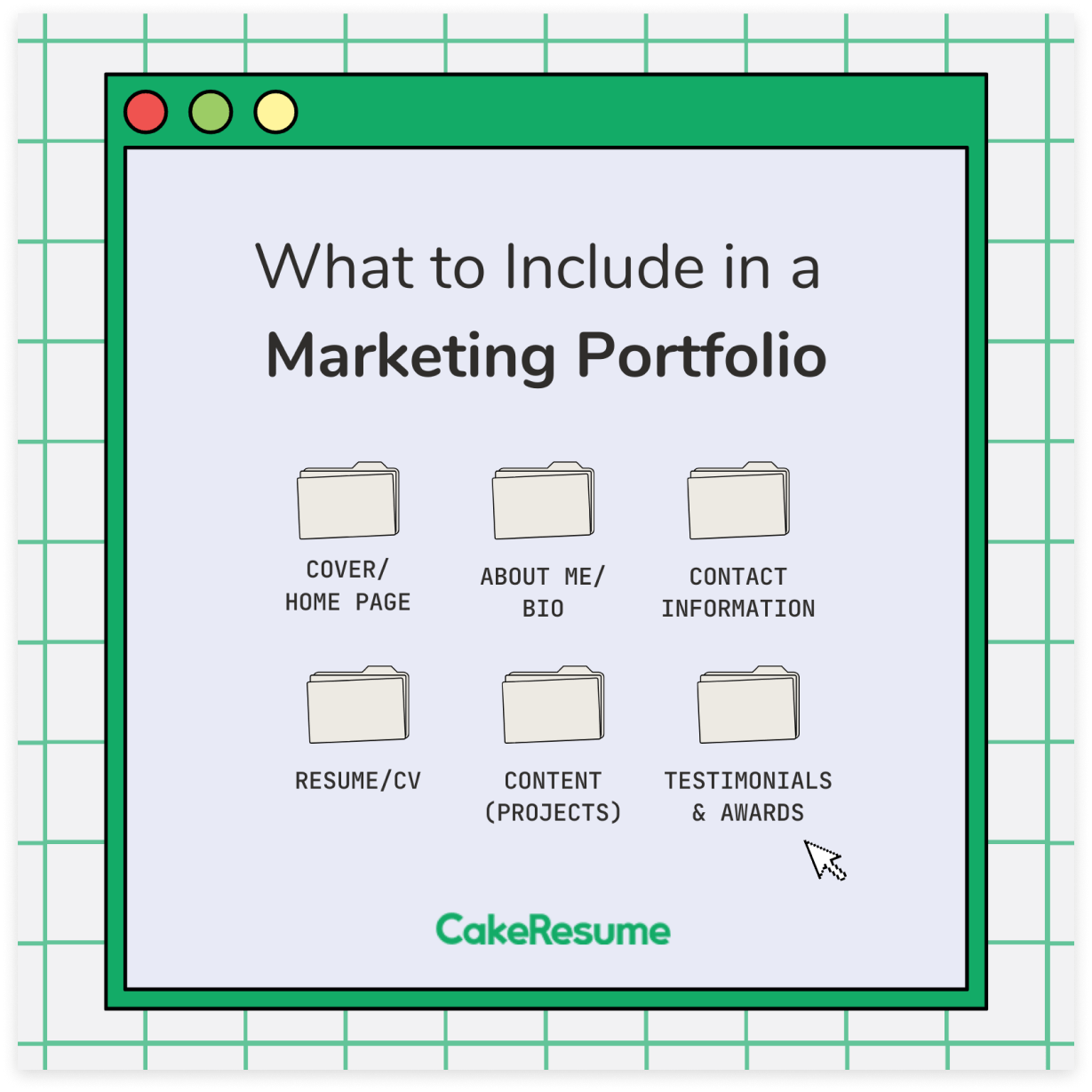
In this article, you will read about:
A marketing portfolio is used by people who work in the marketing field to showcase previous projects that they have marketed for. A marketing portfolio could consist of images, videos, descriptions of the project and the marketer’s contributions, skills and tools that were used during the project, as well as testimonials from previous clients.
When seeking new opportunities, you will find a marketing portfolio exceptionally helpful. It showcases your experience and abilities better than a string of words. With a great marketing portfolio, you can easily communicate your ideas, vision, and identity as a marketer to the potential employer as well as the potential client.
What Is a Marketing Portfolio?
A marketing portfolio is essentially a collection of projects you worked on that exhibit your creativity and numerous other skills, for example, campaigns you coordinated, product launches you organized, a rebranding strategy you designed and implemented, and many more. Projects you contributed to as a marketing specialist and underscore your successes and accomplishments should have a place in your portfolio.
The benefits of having a great marketing portfolio ready at hand are as follows:
- The potential employer or client has a better understanding of the scope of your skills and abilities.
- It is a way for you to show off your skills as a marketer and land clients or dream jobs.
- An aesthetically pleasing portfolio catches the eye.
- You don’t need to panic or stress yourself out if you are suddenly asked to present a marketing portfolio.
- You can also see your growth as a marketing specialist and how far you’ve come from the portfolio.
What to Include in a Marketing Portfolio
Before you start building up your own marketing portfolio, you need to know what others expect to see in it.
There are six main parts of a marketing portfolio:
1. Cover / Home page
We all know we shouldn’t judge a book by its cover, but the cover or the homepage of your marketing portfolio or marketing portfolio website is of great gravity. It attracts the recruiter’s attention and makes them want to learn more about you.
You also need to provide essential information, such as your name, professional title, business name and your area of expertise on the cover or home page of your marketing portfolio, as they are important information that determines their first impression of you.
2. About me / Bio
In this section of the marketing portfolio, you get the chance to impress the hiring manager with your professional achievements and passion for the job. You could get more personal by describing your motivations, career goals or motto, but always remember to maintain a professional tone.
3. Contact Information
Don’t forget to include your contact details so the recruiter can reach you! Put your full name, phone number and email address in this section.
If social media marketing is one of your expertises as well, link your social media accounts in this section of your portfolio as well. Some other information that you could include are relevant websites as well as your location.
4. Resume / CV
A resume or CV in your marketing portfolio provides an overall view of the work you have done so the hiring team can quickly grasp your professional and educational background. They could also understand better the skill sets that you possess, as they should be demonstrated through past experiences that you list on your resume or CV.
5. Content (Projects)
The content is the core of your marketing portfolio. You need to provide concrete proof of your most successful projects as a marketing specialist. They can be in the form of:
- Images
- Videos
- Links to your campaigns or social media if they are relevant
Alongside them, also include explanations or descriptions for each of your projects or campaigns, mentioning the skills and tools you used while working on them. Shed light on your thought process and how you converted your vision into marketing results.
6. Testimonials and Awards
Let your client’s words attest to the positive results of your marketing strategies. Include one or two lines from the client in your marketing portfolio. Awards also given to your projects helps to underline your ability as a marketing specialist.
How to Make a Marketing Portfolio
After deciding what to include in your portfolio, you can start building up one for the marketing jobs you are applying for. Follow the steps below and make your great marketing portfolio:
✨ Choose the right medium/platform.
There are many different forms in which you can present your portfolio. For a digital marketing portfolio, you can create a marketing portfolio with online portfolio builders such as CakeResume and Dribbble, or you can also choose to build a marketing portfolio website using website builders such as Wix and WordPress. Online marketing portfolios give an impression of professionalism and help you to find potential clients.
Create your online presence and personal branding by creating your very own online portfolio. Check out these creative online portfolio designs and portfolio examples, and create your very own online portfolio for free on CakeResume!
✨ Gather ideas and inspiration.
When it comes to portfolios, it’s all about the visuals—how you present your ideas and successes. You want your marketing portfolio to be both visually pleasing and informative, and that’s not easy to achieve. But don’t worry. You can always be inspired by other people. Look up samples of marketing portfolios and learn from them.
✨ Decide on the layout and design.
After taking a look at portfolios you like, you can start working on your own marketing portfolio. First things first, pick a layout and design that best highlights your knowledge and skills as a marketing specialist for your portfolio.
If pictures and photos are the main selling points, pick a layout that puts emphasis on pictures. If the explanation/description takes up as much space as the photo in your marketing portfolio, choose a design that makes it easy for the recruiter to read.
In addition, pay attention to fonts and font sizes. They should show your professionalism and who you are as a marketer at the same time.
✨ Gather your best work.
Brainstorm and write down a list of your best works. Only include the one that paints you in the best light as in making a portfolio, quality is more important than quantity.
The following principles can help you decide what projects to include in your marketing portfolio:
- Choose projects that produce great, tangible results.
As a marketer, you might have pulled off different tasks, for example, devising digital marketing strategies or coordinating campaigns, so include these achievements and back them up with numbers and statistics in the portfolio.
- Choose projects that exhibit your creativity.
Creativity is just as important for a marketing specialist. You want to show the recruiter projects that have the wow factor.
- Choose projects that showcase your skills and expertise in various marketing disciplines.
The variety of your skill sets can help you stand out as someone who can see the big picture. For example, say you’ve coordinated a product launch that involved social media marketing, content marketing and advertising marketing. Include this experience in your portfolio to demonstrate both your marketing expertise and soft, interpersonal skills.
✨ Explain the creative process.
Pictures or videos grab people’s attention, but if you want the hiring manager to have a better understanding of the marketing projects in your portfolio, you need to provide descriptions or explanations about the projects so that the recruiter can better understand:
- The goals of your projects
- Your roles in those projects
- Skills and tools you used to achieve the goals
- Difficulties you encountered and how you tackled them
- The outcomes.
Tips on Creating a Great Marketing Portfolio
There are a few different types of marketing portfolios for various marketing disciplines, and they, of course, focus on different aspects and core abilities of a marketing specialist. Here are some tips for each type of marketing portfolio:
Digital marketing portfolio
- Be specific about your skills and areas of expertise: digital marketing consists of a wide range of different disciplines so be specific and let the potential employer or client know what you do best.
Social media marketing portfolio
- Link the social media accounts, for example, Facebook and Twitter, that you manage in the marketing portfolio, so those who are interested could explore a bit more and learn more about your ability as a marketer.
- Provide numbers, for instance, growth in traffic, engagement, reach, or exposure. There is no better proof of your performance than these numbers.
Advertising marketing portfolio
- Show the logic behind your decision to use a particular form of advertisement and to place a certain advertisement in a certain medium or platform.
Content marketing portfolio
- Explain what elements in the content, for example, a line or a graphic serve to do.
- Provide a list of keywords and show how you incorporate them into the content.
Brand manager portfolio
- Show that you are a strategic thinker with great communication skills: brand managers are tasked to manage the brand and its image across a wide variety of media, so being able to see the big picture and efficiently communicate with others is essential.
- Showcase your ability to analyze data.
Lead generation portfolio
- Emphasize how you identified your target customer and how you grabbed their attention or piqued their interest.
- Provide details for case studies.
Marketing student portfolio
- Include school projects in your marketing portfolio and highlight the skills you learnt while working on those projects.
Marketing Portfolio Examples
The following is some examples of marketing portfolios to look at and learn from before you start creating your own.
Cynthia Lee
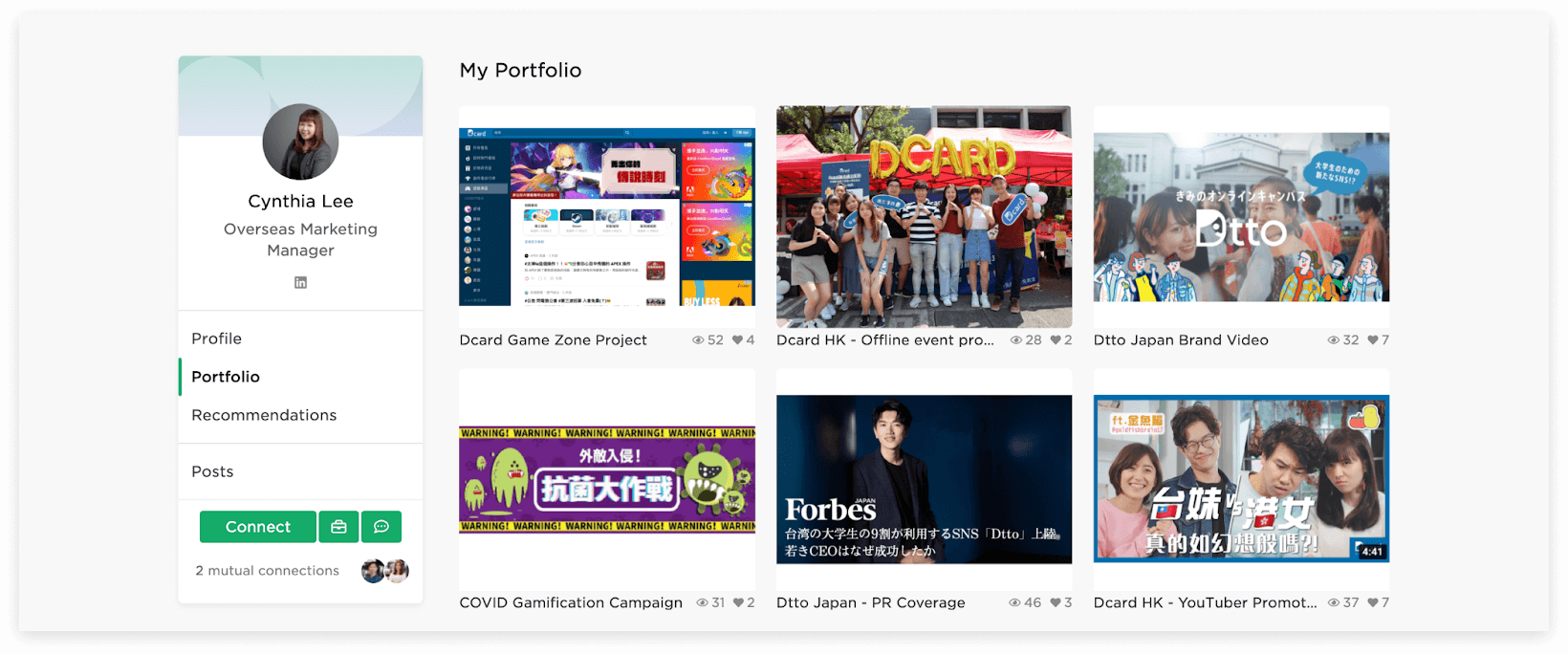
Alana Renfro

Empower Agency
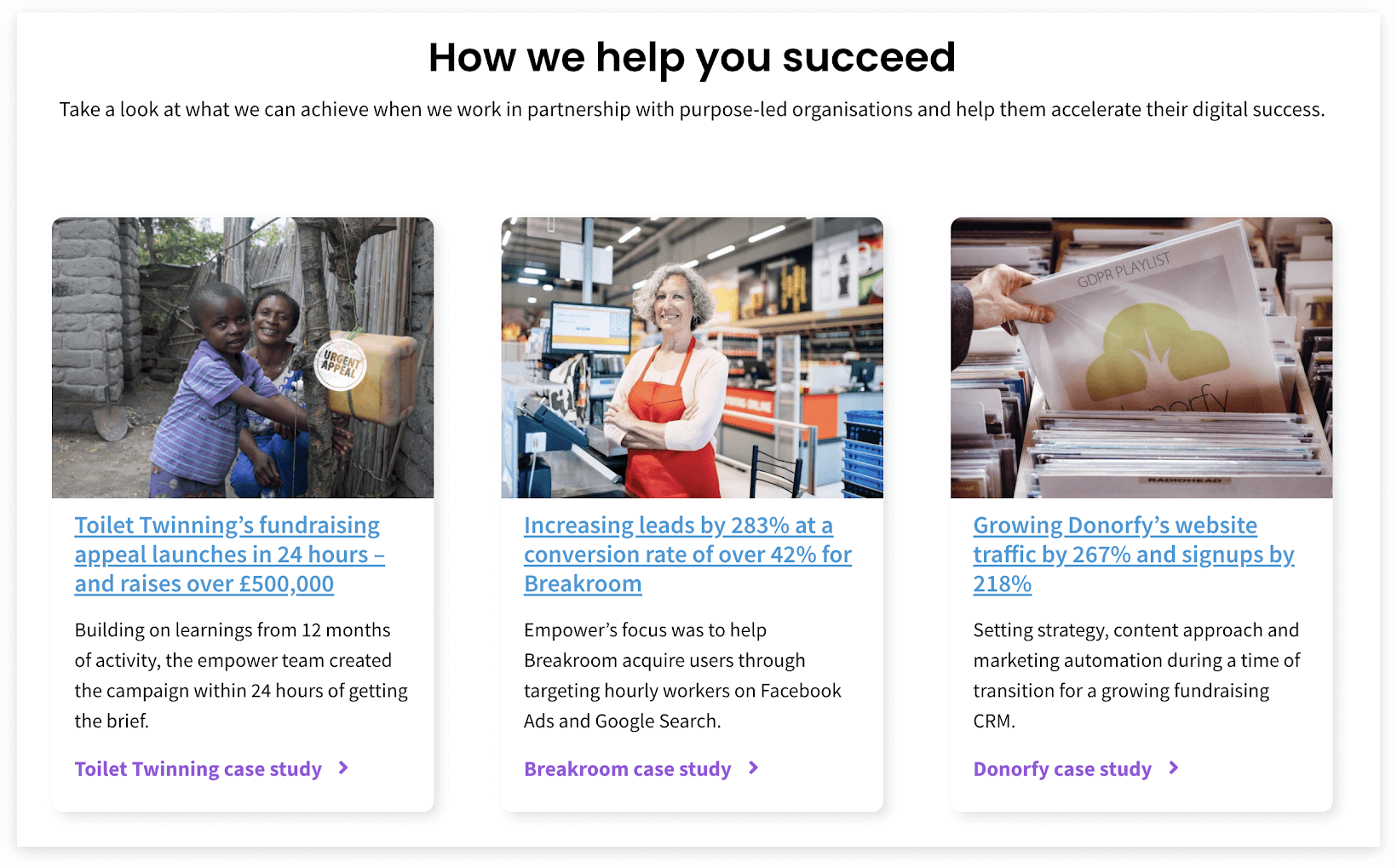
Sarah and Olivia Marketing

Adapting Social
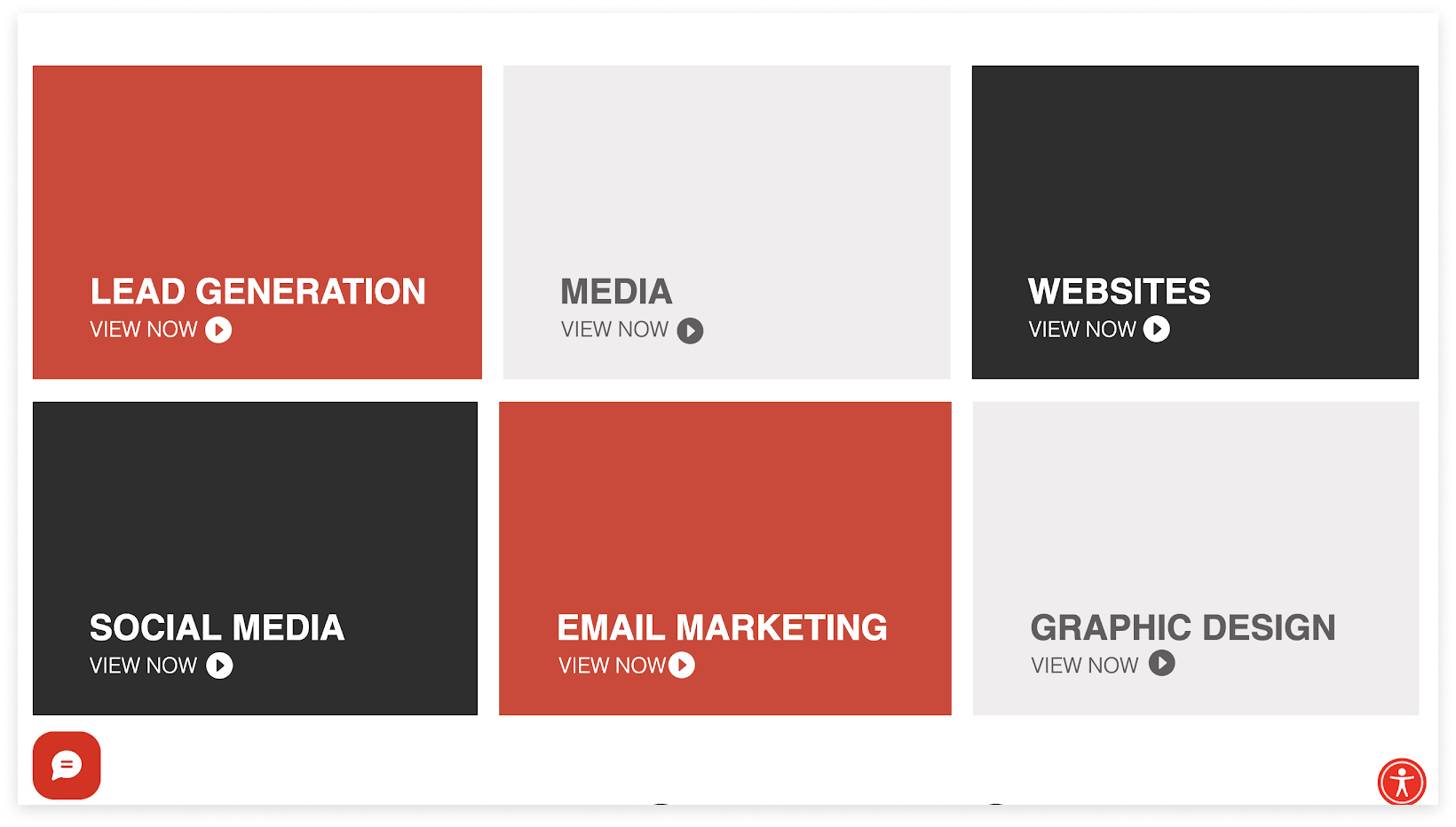
Maya Francis
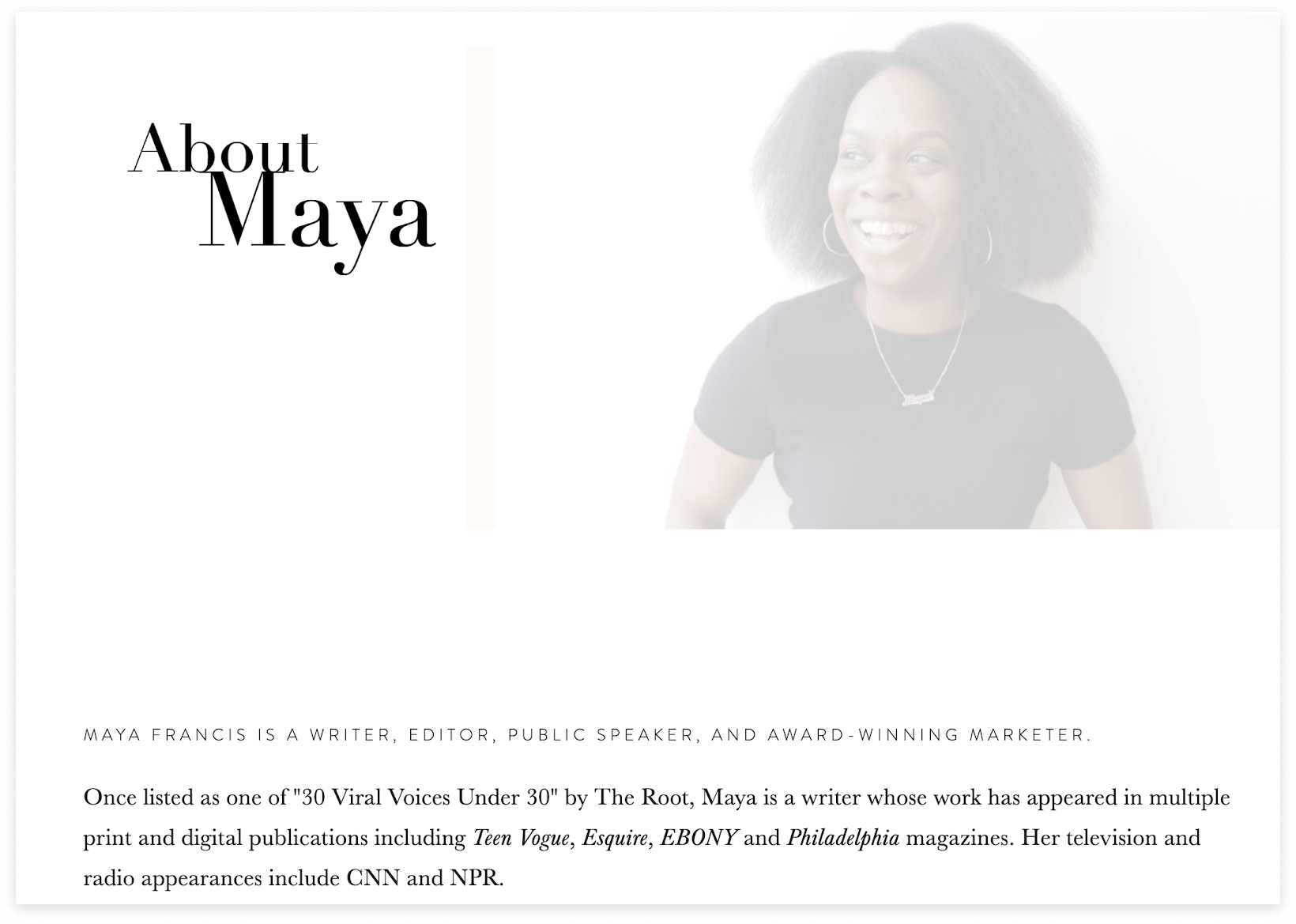
Splitpixel

Lauren Marinigh
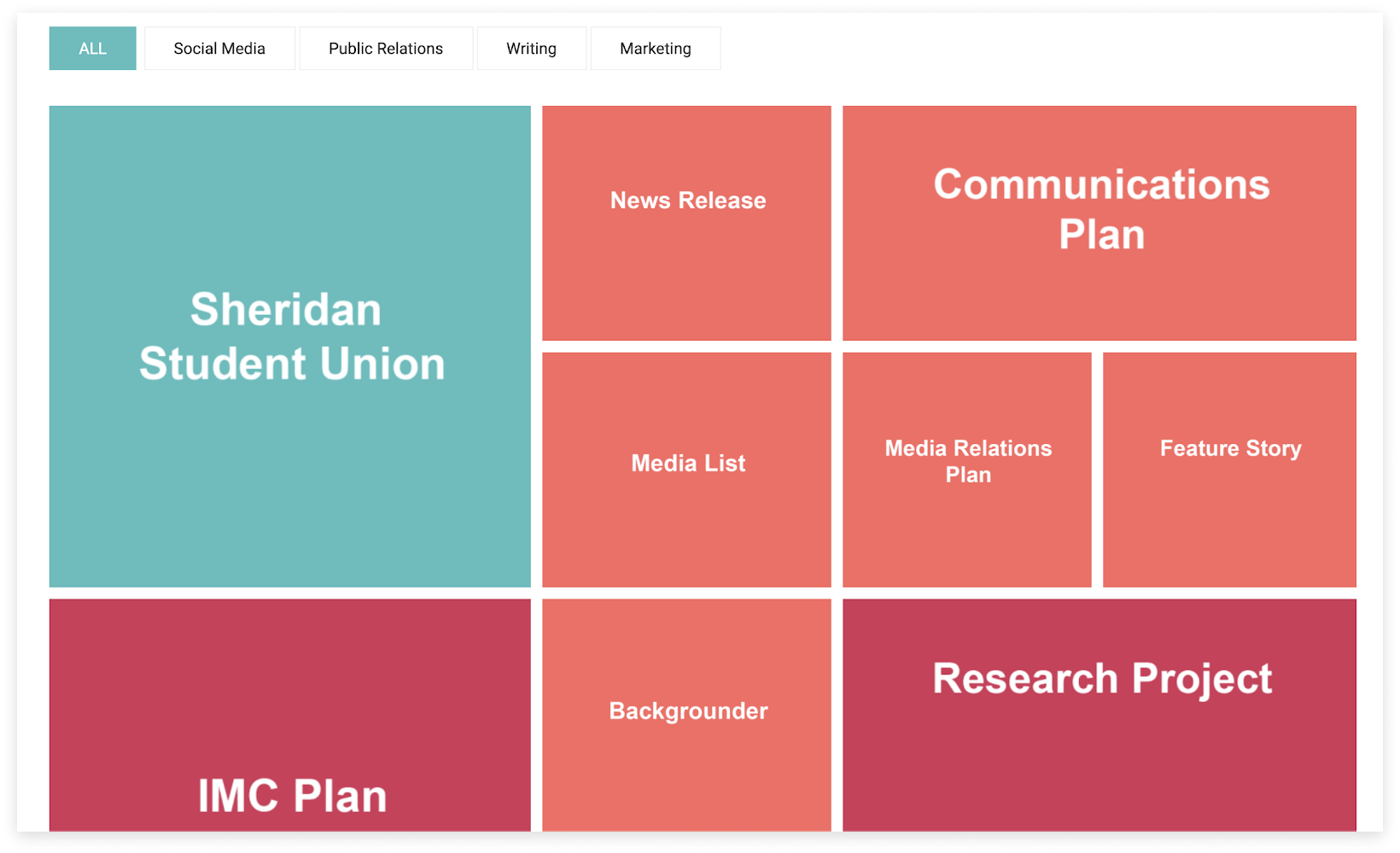
Stefanie Grieser

Elizabeth Harmon

🔑 Key Takeaways:
A portfolio is a career writ large; it can determine if you get a particular job or not. But as long as you follow the steps below, you can make an ace marketing portfolio:
- Choose the right medium for you.
- Get inspired.
- Design the most suitable layout.
- Select your best work.
- Explain your thought process.
Also, have a clear idea of which aspects of a marketing specialist can help you stand out and highlight them accordingly in your portfolio. Show them why you are the best candidate.
--- Originally written by Yin-Hsuan Liang ---
More Career and Recruitment Resources

With the intention of helping job seekers to fully display their value, CakeResume creates an accessible free resume/CV/biodata builder, for users to build highly-customized resumes. Having a compelling resume is just like a piece of cake!






